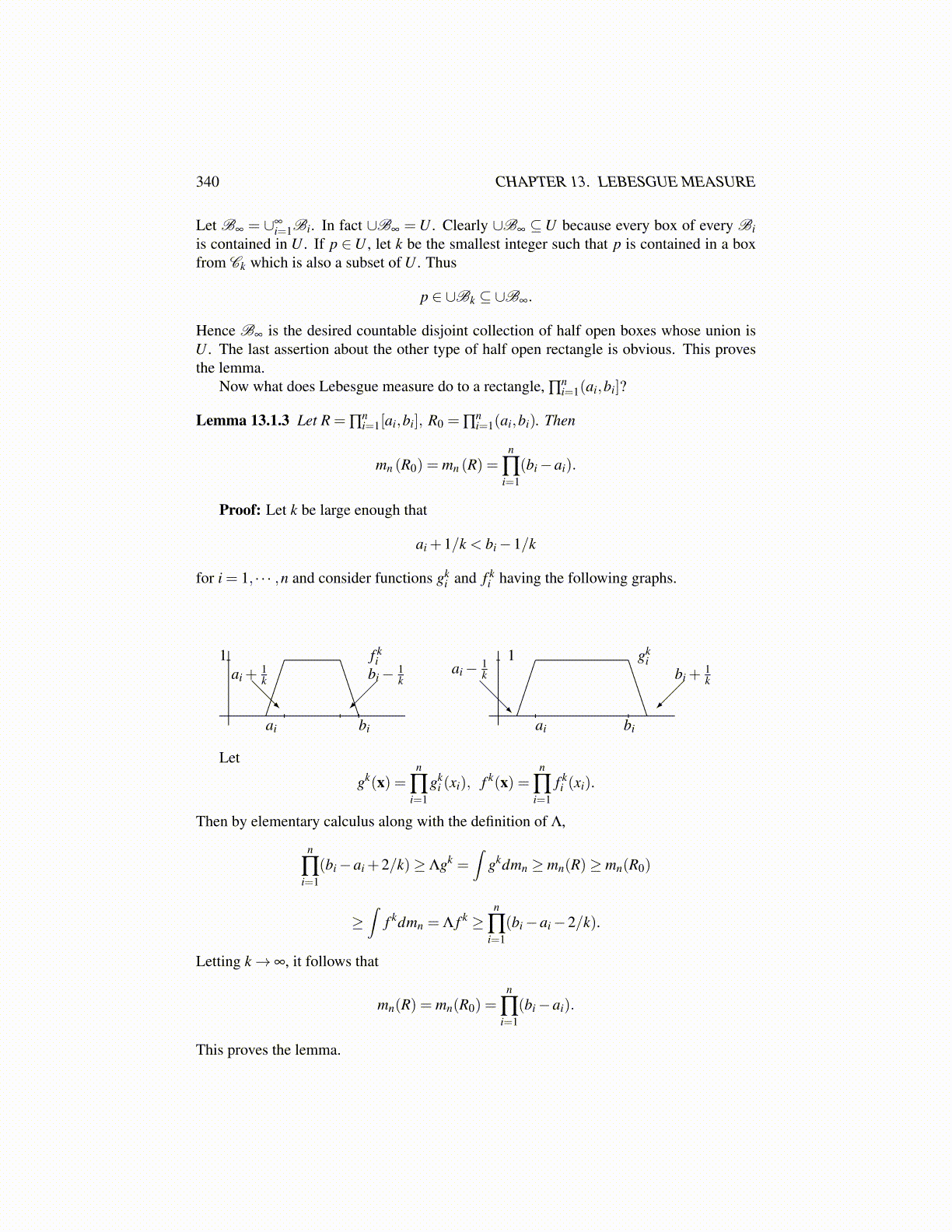
340 CHAPTER 13. LEBESGUE MEASURE
Let B∞ = ∪∞i=1Bi. In fact ∪B∞ = U . Clearly ∪B∞ ⊆U because every box of every Bi
is contained in U . If p ∈U , let k be the smallest integer such that p is contained in a boxfrom Ck which is also a subset of U . Thus
p ∈ ∪Bk ⊆ ∪B∞.
Hence B∞ is the desired countable disjoint collection of half open boxes whose union isU . The last assertion about the other type of half open rectangle is obvious. This provesthe lemma.
Now what does Lebesgue measure do to a rectangle, ∏ni=1(ai,bi]?
Lemma 13.1.3 Let R = ∏ni=1[ai,bi], R0 = ∏
ni=1(ai,bi). Then
mn (R0) = mn (R) =n
∏i=1
(bi−ai).
Proof: Let k be large enough that
ai +1/k < bi−1/k
for i = 1, · · · ,n and consider functions gki and f k
i having the following graphs.
ai +1k
ai
1bi− 1
k
bi
f ki ai− 1
k
ai
1
bi
bi +1k
gki
Let
gk(x) =n
∏i=1
gki (xi), f k(x) =
n
∏i=1
f ki (xi).
Then by elementary calculus along with the definition of Λ,
n
∏i=1
(bi−ai +2/k)≥ Λgk =∫
gkdmn ≥ mn(R)≥ mn(R0)
≥∫
f kdmn = Λ f k ≥n
∏i=1
(bi−ai−2/k).
Letting k→ ∞, it follows that
mn(R) = mn(R0) =n
∏i=1
(bi−ai).
This proves the lemma.